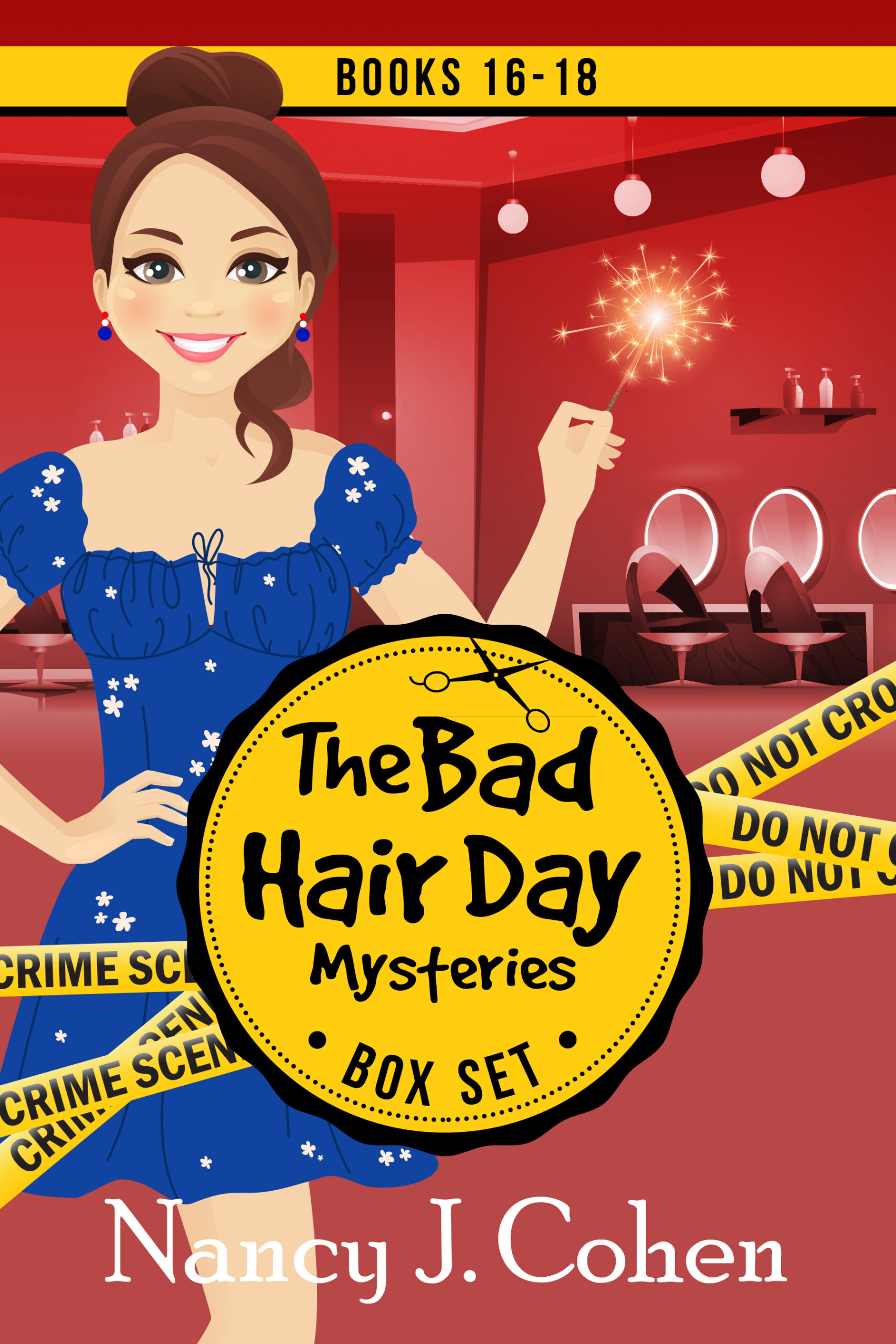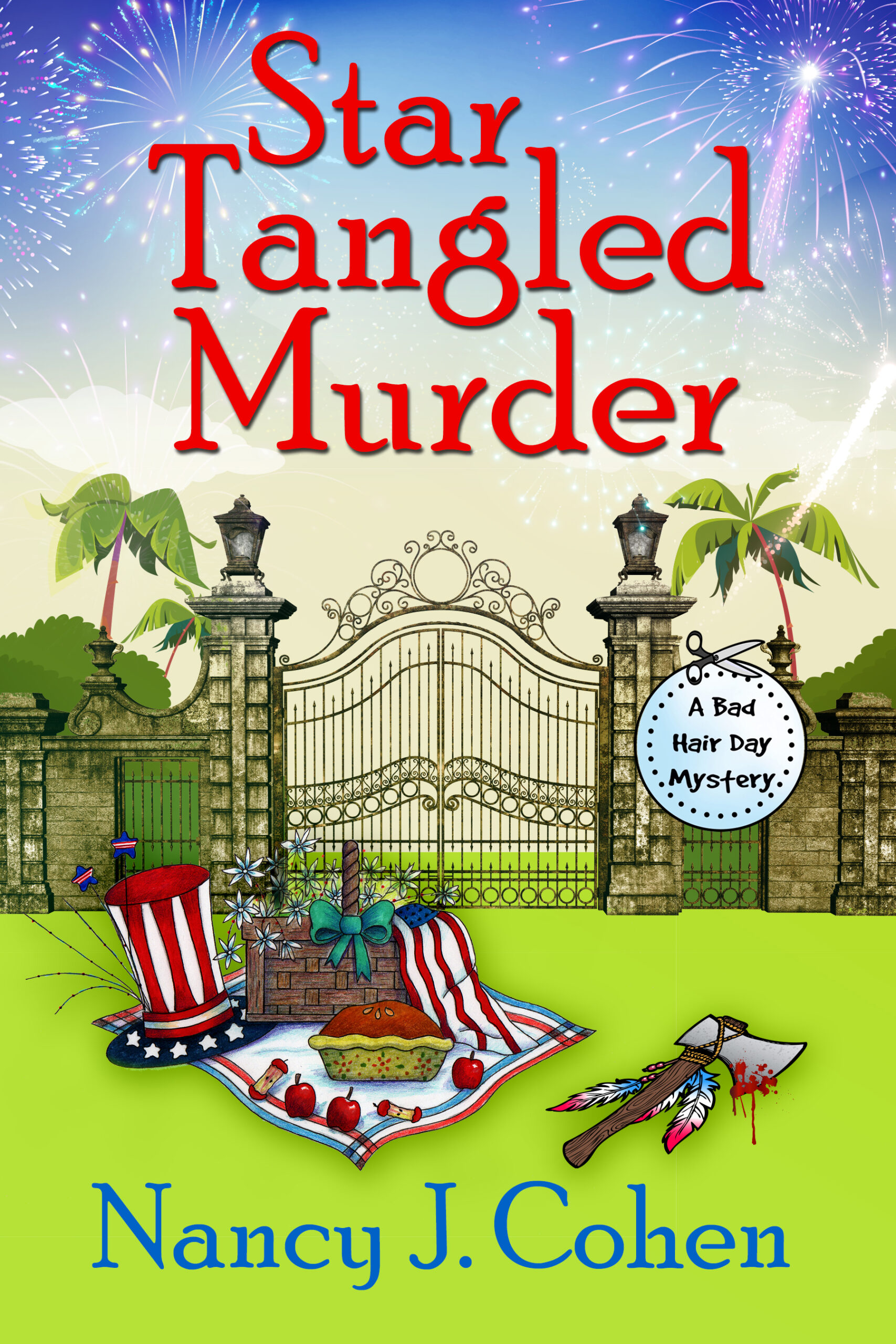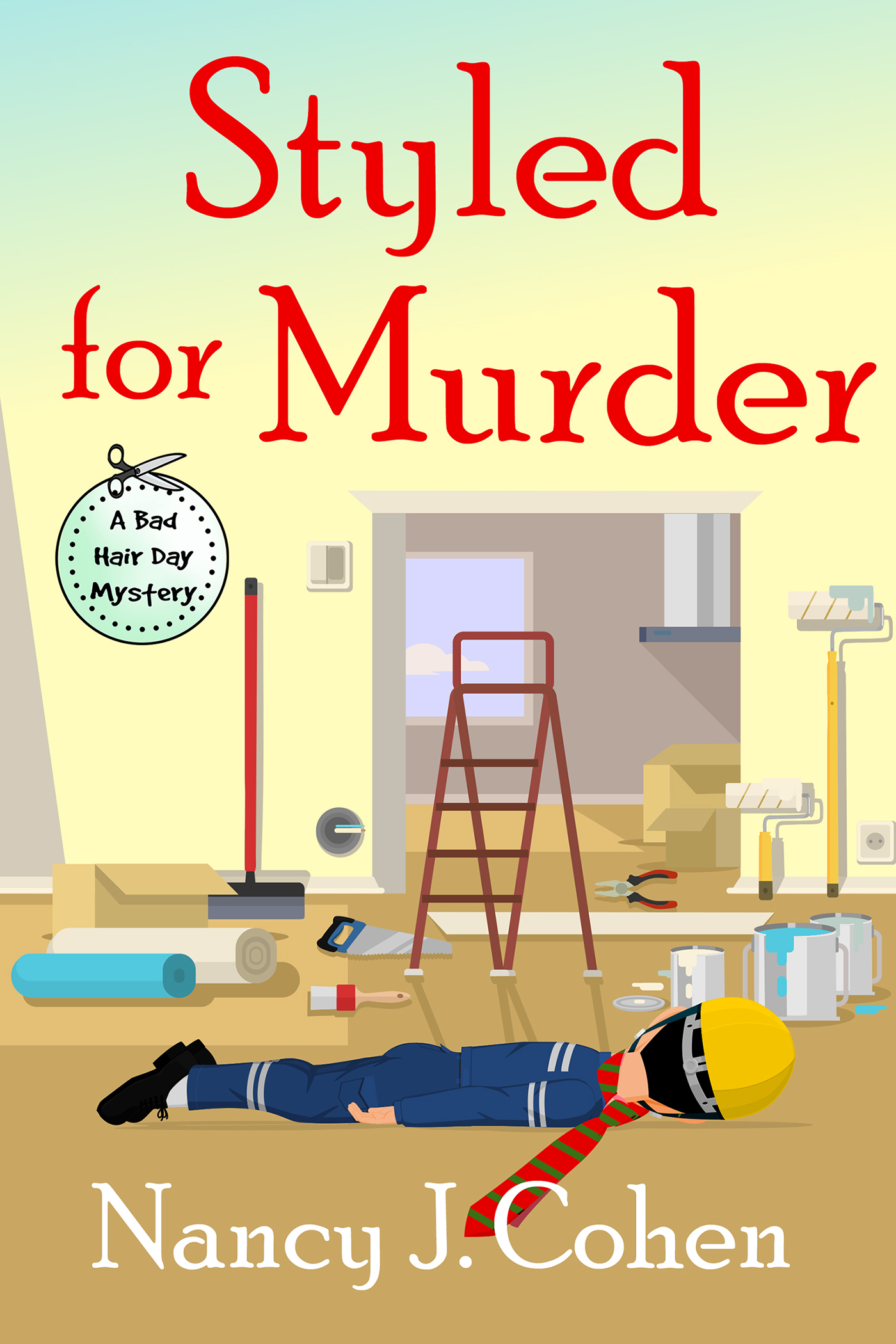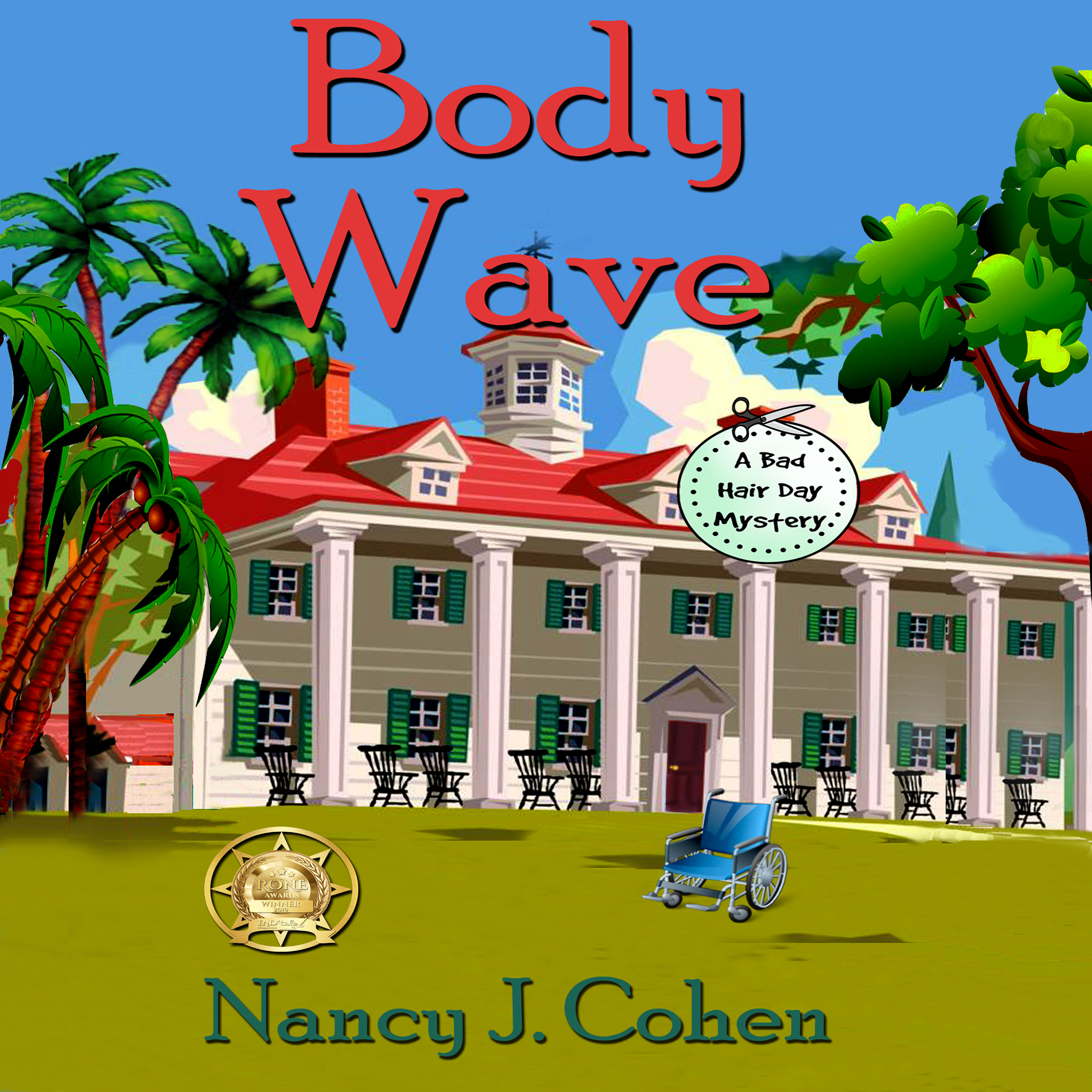How do you map your protagonist’s family tree? Who are your characters’ relatives? What are their birthdays? And how much should they age from book to book if you’re writing a series?
Creating a Timeline is crucial to a series. Keeping records of your recurrent characters in this regard is essential. Currently I’m beginning work on my next Bad Hair Day mystery, tentatively titled Peril by Ponytail. Marla and Dalton take a delayed honeymoon to an Arizona dude ranch owned by his cousin, Wayne Campbell.
Well, guess what? Other than Dalton’s parents and teenage daughter, we haven’t mentioned his family members before. Suddenly I’m at a loss as to his family tree.
Not so with Marla. I created her family tree for Dead Roots, when Marla and Dalton spent Thanksgiving weekend with her extended family at a haunted Florida resort. Where can I find this record? With a sense of urgency, I searched my computer files. Nope, not there. So I pulled out my notebook for that particular title. I breathed a sigh of relief when I discoverd a handwritten diagram of Marla’s family tree. With newer technology at hand, I scanned this paper into a file so it doesn’t get lost.
Thank goodness I have extensive notebooks for each title. What I keep in them is subject for another blog, but suffice it to say that I have lots of rich material on character backgrounds, research notes and articles, and more.
Now I have to create Dalton’s family tree. I know his age and birthday and how it’s progressed from book to book because I write it down for each volume. Ditto for his daughter and what grade she’s in. When his parents came into the picture, they got added, too. But who else is there? How is cousin Wayne related to him?
I’ll need to work on this by drawing out his family tree. I don’t know how to do it on the computer without accessing complicated programs, and they’ll take too much time to learn. But considering my experience, here are some items you might want to add to your notes for each book you write and/or for your overall series bible. The timeline can include:
- Birthdays
- Time of Year each book takes place, i.e. Season and Month
- Day to Day Progression of Plot per story title
- Family Trees
- Proper Names. This might be a separate file or you can put them here. This means the name of your person’s housing development, favorite restaurants, type of cars people drive, pet’s names, etc.
- Maps of the town or neighborhood where your character lives and works
- Diagrams of a particular locale. Here is Sugar Crest Resort from Dead Roots.
Your needs may differ with each book as to what your timeline requires. Peril by Ponytail is the twelfth book in my series, and yet I’ve not had to create Dalton’s family tree before. So what you need for one volume might not apply to another. Whatever you do, make sure you record the material in print and on your computer files. Back it up so you don’t lose it. If I hadn’t found Marla’s family tree in that notebook, I would have been at a loss should I need it again.
So stay attuned to your timelines when plotting your story and lay down the necessary groundwork. And now, tell the rest of us what else we might include in our Timeline folder.
44 thoughts on “Creating a Timeline”
Comments are closed.


























Good advice and one I better start following for the Kim Reynolds mystery series.
Yes, it’s hard enough to keep track of these details later on. Best to start as early as you can.
I’m not planning to write a series, but I definitely used a timeline for Wake-Robin Ridge. I would have been so lost without it, especially since part of my story takes place in the 1960’s and part is current. I had to make sure people aged appropriately, and I didn’t get confused as to how old they were in later scenes or how long they had been married. Stuff like that. And I had to follow the ages of their children, too. I could not have done it without a basic timeline for the entire book, and bios with dates, etc, on each character. I’ve never done a full family tree like you have, though. It’s something to consider. Even though I’m not writing a series, per se, I do intend to write more books in the same setting, and there will be some character overlap from the first book. Plus, I may do a story on the family of one of the characters from Wake-Robin, too. So I would need to sort out those relationships. Your idea is great. I’m wondering if there might be a blank family tree template online somewhere that could be filled in. It’s worth a look. Thanks for this post, Nancy. You’ve given me more to think about. (As if my tiny brain wasn’t already in overload.) 🙂
If you find that family tree template, and it’s printable, let me know. For busy writers, there are VA’s out there who will scour your series and write the bible for you.
I’m a one-man show at this stage, I’m afraid. Start to reader’s hands. (Or Kindles). Maybe that will change at some point, who knows? If so…may I ask…showing my total ignorance, here…what does VA stand for? Thanks! 🙂
Virtual Assistant. I’ve used one to design my first Rafflecopter contest and put the tab on my FB author page, and to design my bookmarks. They charge an hourly fee and can do any task you need done. Some work just with authors so know about the biz.
Aha. Way cool info. Thanks, Nancy. I’m making a note of this, for sure.
When I was writing Deadly Bones, I had character histories going back over a century and did have to draw up a timeline for everyone to make sure the ages were reasonable (and I didn’t have anyone giving birth to a character at age 12!) I really need to document my characters better, especially in my Mapleton series, where I have a lot of recurring characters–although for Deadly Bones, the genealogy was all for the secondary characters involved in the mystery.
Terry
Terry’s Place
If only we knew all this when starting out with our series, right? I’m on book number 12 and only getting around to Dalton’s family tree now, but I haven’t needed it before this.
We not only do family trees, we do an extensive timeline. We research names from each of the years our characters were born in order to make them authentic.And both are absolutely critical when writing historical, althoug we’ve also done both for our series books.
Historical novels require even more timelines. The research would be too daunting for me!
Thanks for the reminder. I know I need to write a series bible and keep putting it off. Guess that’s not a smart idea!
I’d suggest working on only the aspects you need at the time. Keep all the files under one folder for your series so you can access them as needed.
Sigh, you are so right with your suggestions. I know it’s time to diagram all my fictional theme parks. Then I’ll tackle the family trees.
Now you’ve aroused my curiosity. Why the theme parks? I have fictional theme parks throughout my Drift Lords series.
Nancy, my pro tag is a theme park manager. Inspired by my time working in training at Disney and opening Universal.
Sounds like fun to me!
These are great ideas, Nancy. I find also that as you go along in a series you discover more things you need to know about your characters. When I was writing Natural Predators, which concerns a crime that happened just before statehood in Hawaii in 1958, I had to go back and see how old my protagonist’s parents would have been then– which governed what part of the story they could get involved with.
Yes, that’s true about discovering new things as your series progresses. Figuring out ages and ancestors can be a time consuming process.
Good advice, Nancy. Before I started working on my Sandy Fairfax Teen Idol series, I did a timeline of his life since high school: the albums he recorded, his TV shows, major life events year by year. Lots of work but worth it in the end as now I have a rich background to draw from. I don’t have an extensive family tree for him but I gave him parents and siblings. Most writers want to jump right into the story, but stopping to do a character background is a good use of time.
Sounds like you have all the details you need. You were smart to figure them all out ahead of time.
Interesting posting , Nancy. And lovely blog. I look forward to reading more goodies.
Thanks so much, Joyce.
Great tips and I’ve just started adding birthdates to my character descriptions. I like your sketches too. They help with visualization as you’re moving characters through a scene.
Too bad I’m such a rotten artist! LOL
Great discussion. MS Word has a family tree template that goes back four generations.
Wow, Danielle. I didn’t know that! I’m new to Word2013, and still haven’t learned my way around. I’m going to go check that out right now. Thanks for the info!
You’re very welcome. 🙂
How do you access it? I clicked on “File” and “New” and I don’t see it.
I have Word/Office 2010 if that makes a difference.
Hi Nancy. I searched for ‘family tree’ in the search for online templates text box on the File–New page.
That’s what I did, Nancy. On the page that shows the various templates for invitations and reports, there is a box at the type where you can type in what you are looking for. It came right up, along with a smaller one shaped like an apple tree. It’s great! Thanks again, Danielle.
Lots of good information here. Thanks for the post, Nancy. It’s amazing how fast we forget what we’ve written–and then edited. At the Love is Murder convention in Chicago they had five best-selling authors on stage for a contest to see which of them could identify their own work from snippets read by the moderator. Difficult for the authors. Funny for the audience.
That sounds like a fun panel and a good idea for other conferences!
Make that “at the top.”
Sorry!
Danielle and Marcia, I found it! Thanks so much. Isn’t it cool how we learn such neat things from each other?
Yes! I agree. I think writers share almost as much as gardeners do. Gardeners love nothing more than to pass along seeds and cuttings to others. So far, I’ve found the writing community to be just as generous and supportive. I think it’s wonderful.
You’re welcome. Those templates can be very helpful. I plan to use that particular one myself.
I keep notes but not nearly as extensive as you do. I need to change my ways. One thing I do that is a bit of a cheat is hang onto the style sheets my publisher sends me. They contain every character and place name in each book, with little descriptions of each – a great quick reference tool!
Oh yes, I must have those here somewhere too. Now if only I could find them. You’re right, those style sheets can come in handy.
I’m going through the same experience with my Drake Springs, FL, series. I have a city map, genealogies of characters, and a binder filled with character descriptions. It’s much more work to write a series than a stand-alone book because the book in a series has to stand alone, too.
You are absolutely right, Cheryl. A series requires a lot more work.
Good advice. I write in more than one genre, so its a relief to come back to a series and find that I have a map or a tree or a characterization summary of someone who will be in the next book. Readers expect continuity, and so do I!
Yes, Maggie, it is especially important to keep track of things when alternating series.